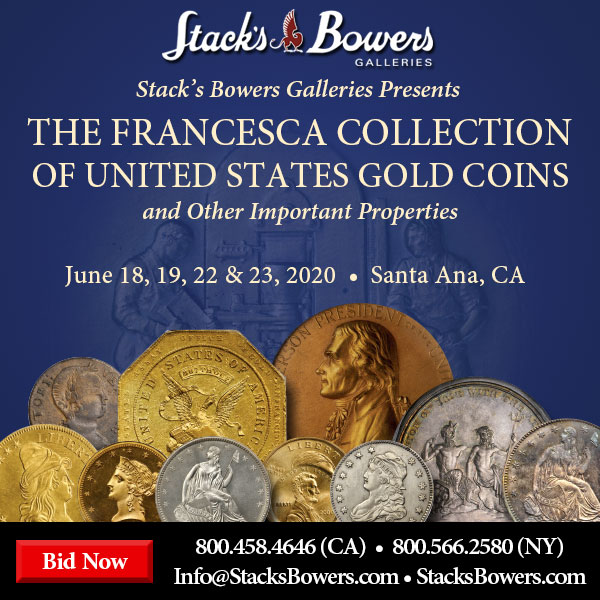
PREV ARTICLE
NEXT ARTICLE
FULL ISSUE
PREV FULL ISSUE
RON GUTH ON COIN ORIENTATIONRon Guth's latest blog article is about the important task of orienting coin images. Here's an excerpt - be sure to read the complete version online. -Editor 
One of the more interesting puzzles facing researchers and publishers is how to orient coin images for visual purposes. In other words, how should a coin be oriented or rotated so that it appears consistent throughout a publication or across publications? For most coins, especially modern ones, visual clues on the coins themselves can be used to come up with a universally accepted orientation. On other coins, especially U.S. coins from the early 1800's, coin orientation becomes trickier. The author ran into this problem while accumulating coin images for a visual Condition Census (the best examples of a given coin). Different sources sometimes orient coins differently such that each image must be rotated to make them consistent throughout the Census. In order to save even more work in the future, a decision should be made before images are accumulated to determine which orientation should be used. The illustration above combines the unretouched images of the reverses of four 1796 $10 Eagles shown on the PCGS CoinFacts website at https://www.pcgs.com/coinfacts/coin/1796-10/images/8554 (lest anyone think I am picking on PCGS, they actually do a good job at being consistent with their image orientation). For this illustration, I drew a horizontal line through all of the images using the wingtip on the left side of the first coin as a reference point. The wingtips on the second and third coins are slightly lower, but both coins are oriented in nearly identical positions. The wingtip of the fourth coin is well above the line, indicating a rightward orientation. Which of the four images would you choose as a model for orienting the reverses of 1796 $10 Eagles? Personally, I prefer the first image because it has a more balanced "look" than the other images. The position of the eagle's feet appears more natural and a horizontal line through the bottom of the U in UNITED almost touches the bottom of the second A in AMERICA. The second and third images appear to be tilted too much to the left and the fourth image is tilted too far right. You might choose a different orientation for your own reason. The key is to be consistent from image to image. Here is what the images look like when they are rotated to the same orientation: 
To read the complete article, see:

Wayne Homren, Editor The Numismatic Bibliomania Society is a non-profit organization promoting numismatic literature. See our web site at coinbooks.org. To submit items for publication in The E-Sylum, write to the Editor at this address: whomren@gmail.com To subscribe go to: https://my.binhost.com/lists/listinfo/esylum All Rights Reserved. NBS Home Page Contact the NBS webmaster 
|